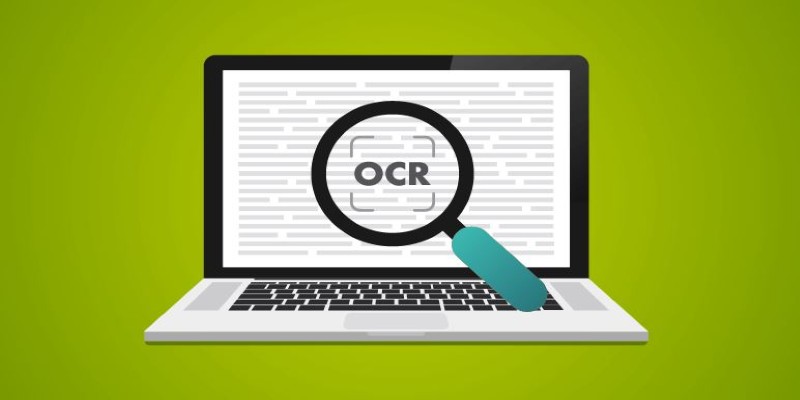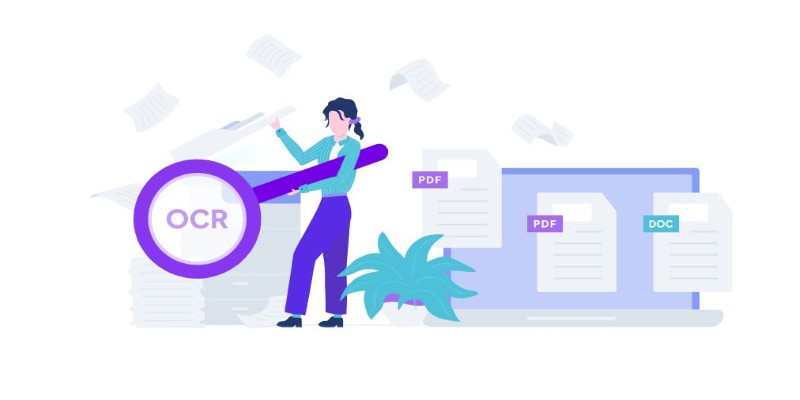You've probably snapped a photo of a document, only to realize later that you can't copy or edit the text. That's where Optical Character Recognition (OCR) comes in—it turns images of text into actual, usable words. Imagine scanning an old handwritten letter or a printed contract and instantly converting it into an editable digital file. OCR isn't just about convenience; it's revolutionizing industries and making information accessible, searchable, and interactive.
Whether it's helping businesses process paperwork more quickly or enabling visually impaired users to "read" text, OCR is changing how we deal with written content in today's digital world. But how does it work?
The Mechanics of Optical Character Recognition
At its core, Optical Character Recognition is about instructing computers to read text in the same way that humans do. However, whereas the human eye can automatically tell letters, fonts, and handwriting apart, OCR technology depends on a mixture of pattern recognition, artificial intelligence, and linguistic analysis. It starts with scanning a document or image, segmenting it into pixels, and finding areas that look like characters. Early OCR systems relied heavily on template matching, in which pre-defined letter forms were matched against text scanned. The technique, though, faltered with handwriting variations, font differences, and image quality issues.
Modern OCR technologies use machine learning and artificial intelligence for greater accuracy. Rather than strict templates, they look for patterns, identify contextual relationships, and even anticipate words from linguistic structures. Better OCR engines use natural language processing (NLP), so they can self-correct based on sentence composition. That's why OCR can now easily read through typed material, handwritten notes, and even skewed words in photos. The payoff? An electronic document that is not only a picture but an interactive, editable form of content.
Applications and Benefits of OCR Technology
OCR technology extends far beyond simply converting books into digital formats. It plays a crucial role in various industries where text extraction is essential. Banks leverage OCR to process checks, loan applications, and financial forms, reducing manual workload and errors.

Hospitals rely on OCR to digitize patient records, making medical histories easily searchable and accessible. Legal firms use it to scan and index vast volumes of documents, enabling quick retrieval of case files and contracts. In retail, OCR powers expense tracking apps by automatically extracting data from receipts, while government agencies utilize it for passport verification and digitizing historical archives.
For businesses, OCR eliminates tedious manual data entry, improving efficiency and accuracy. Employees can focus on strategic tasks rather than spending hours transcribing documents. Another major benefit is accessibility—OCR-powered screen readers help visually impaired individuals by converting printed material into digital speech. Additionally, multilingual OCR enhances global communication by supporting text recognition in multiple languages, facilitating translation and cross-border operations.
One of the most impactful uses of OCR is in real-time translation applications. A smartphone camera can scan a sign in a foreign language, and OCR instantly extracts the text for translation. This technology has transformed international travel, education, and global communication, bridging language barriers effortlessly and making information more universally accessible.
OCR in Artificial Intelligence and Automation
The combination of OCR with artificial intelligence has led to new levels of automation. Many industries now integrate OCR into robotic process automation (RPA) systems to handle repetitive tasks. Banks use OCR-driven AI to automatically verify identification documents, while logistics companies rely on OCR to extract addresses from handwritten labels.
AI-powered OCR can also enhance security by recognizing fraudulent documents. Machine learning models trained on thousands of documents can detect inconsistencies in text alignment, font mismatches, or forged signatures, preventing identity fraud. This is why OCR plays a crucial role in digital verification services, helping businesses authenticate documents with minimal human intervention.
As AI evolves, OCR is expected to become even more advanced. Future versions may move beyond simple text extraction to interpreting entire document structures, such as differentiating between headings, paragraphs, and tables. This would allow OCR to extract meaning rather than just words, making it a more powerful tool for automated content analysis.
Challenges and the Future of Text Recognition
While OCR technology has made impressive strides, it still faces significant limitations. Accuracy depends on image quality, and factors like poor lighting, blurry scans, or unusual fonts can lead to recognition errors. Handwriting remains particularly challenging, as individual writing styles vary widely. Even advanced OCR systems struggle with interpreting complex layouts, symbols, and contextual nuances.

To address these challenges, developers are integrating deep learning and AI-driven models capable of adapting to diverse text styles and structures. Instead of merely recognizing characters, future OCR systems aim to understand content semantically. This means they could interpret handwritten equations, identify relationships between text and images, and even analyze tone in written communication.
Looking ahead, OCR is expected to merge with augmented reality (AR) and voice assistants, enabling real-time text interaction. Imagine pointing a phone at a document and having it instantly translated or summarized. AI-powered OCR could also enhance fraud detection by spotting inconsistencies in official documents. As machine learning continues to refine its capabilities, OCR will become more than just a text extraction tool—it will evolve into a sophisticated system that comprehends and processes written information in ways once thought impossible.
Conclusion
OCR has come a long way from its early days of rigid pattern matching. What once seemed like a niche tool for digitizing printed documents has now become an essential technology driving efficiency, accessibility, and automation across industries. From business operations to accessibility solutions and real-time translations, Optical Character Recognition continues to shape how we interact with written information. While challenges remain, advancements in AI and machine learning are pushing OCR towards higher accuracy and broader applications. The ability to convert static text into digital, editable content has transformed the way we handle information, and as technology evolves, so will its role in shaping the digital world.
